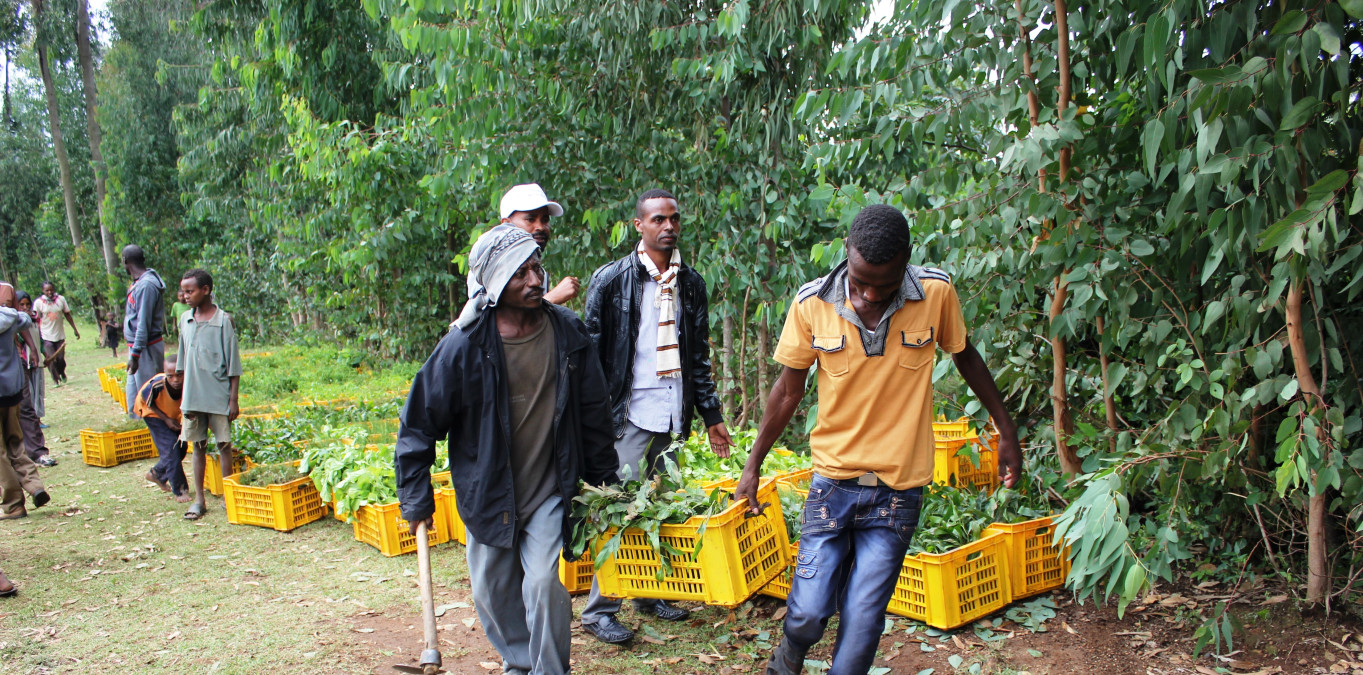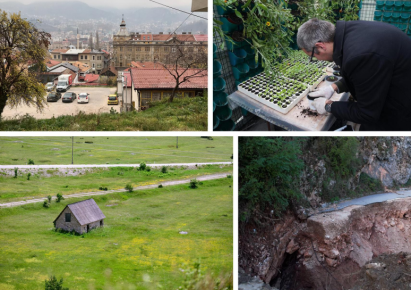Natural Resource Management in Ethiopia
Published: May 26, 2020 Reading time: 6 minutes Share: Share an articleIn Ethiopia, People in Need promotes a holistic Natural Resource Management (NRM) approach to allow communities of the target kebeles to actively implement long-term measures for the rehabilitation and protection of communal and individually managed lands, and to enable sustainable development of the livelihoods of local households.

The climate is changing; these days it is more visible than any time before. The reasons are many. But in Ethiopia, we can claim that one of the important ones was the deforestation which occurred from the 1960s to 1980s. During these years, Ethiopia basically lost 70% of its forests’ coverage, mostly due to the needs of the growing population. This resulted in problems such as a disturbed landscape, massive erosion, a loss of productive soil, and famines. Trees which were used to help in reducing carbon dioxide and the effects of global warming and climate change were gone.
Back then, many initiatives were started to address how to afforest Ethiopia again to prevent climate change from impacting the largest segment of the Ethiopian economy– rainfed agriculture, on which most people depend.
NRM intervention
In July 2019, we witnessed how the world was amazed but also puzzled by a massive afforestation campaign in Ethiopia, which claimed that more than 350 million trees were planted within a day. Despite the fact that this number is hard to verify, the effort should be appreciated. It is however necessary to mention that this campaign wasn't anything new to Ethiopia. It was only the marketing product of long-term NRM interventions which have been implemented in Ethiopia for decades.
PIN, as part of these initiatives, is implementing a project in the Dijo-Bilate watershed, Alaba. It is an area prone to recurring natural disasters, resource degradation and climate change. The root cause of problems in the area is flooding. Floods occur every year in multiple kebeles, affecting people's lives, damaging road access to schools and hospitals, and also worsening erosion and agricultural productivity.
PIN has applied a holistic NRM approach which has proved to be very appreciated after showing positive results in just a few years. The core of the project was to create landscape management maps (LMPs) for particular kebeles, showing the whole watershed and the necessary intervention places. For Ethiopians and their agricultural offices, it is a great tool to be used for strategic planning, as in the past this was done largely by using estimates. Now, based on the LMPs, those responsible are able to see the degraded areas, slopes, and erosion gullies and to plan NRM interventions accordingly. To put it simply, the government is well aware of the problems and the NRM work being done yearly during “watershed campaigns”. But due to insufficient knowledge and the complex picture of the watersheds, these efforts very often failed.
PIN also provides trainings for DAs (development agents) who are the people responsible for the implementation and monitoring of NRM measures in villages. They are taught technical information about land degradation and anti-erosion structures, as well as about the importance of planning and cross-border cooperation across the watershed, as it is a natural structure and doesn´t respect administrative borders. Through DAs, farmers are also educated and held responsible for maintaining the structures’ functionality.
A new element introduced in 2018 in the Alaba project was soil classification. This has never been taken into account during the implementation of similar NRM projects, even though the soil type matters especially when implementing physical structures, which used to be the core of NRM projects. Vertisols, heavy black soils, were introduced. These soils have the tendency of moving and cracking during the season and thus they damage physical structures. As a side effect, lots of money has been saved, as the physical structures (gabion boxes) are among the most expensive items in NRM budgets.
The grass and seedlings production in district or village nurseries is also supported. Seedlings are prepared for the coming year to be planted on newly selected degraded land based on LMPs. The diversity of the species is stressed. Roots of seedlings and grasses also support the physical structures. Within the holistic approach, some parts of the degraded area are closed to prevent the entrance of livestock and subsequent overgrazing. Instead, people are educated and provided with grass seeds to prevent open grazing and feed animals with their own resources, practising the so-called “cut and carry” system.
Within a short period of time (2-3 years) it is possible to see the first impacts of the work. Affected places are green, trees have grown to several metres, and areas are full of grass. As a result of that, there are springs and tree species re-occurring in these areas. Such places are also attractive for wild animals, which are returning. Areas are more humid, groundwater is recharged and the green mass is able to absorb more carbon dioxide.
Three principles behind the success
This project can be called successful. It stands on three main principles: a) Holistic approach, b) technical support and c) education of people.
Remembering the 2019 campaign and the 350 million trees planted, this is not unusual or anything new to Ethiopia, as many similar initiatives are happening all over the country. It is all possible thanks to the joined effort of people, the government and many NGOs.
There are, however, a few important things to be stressed. It is not only about planting trees. Trees must be planted in well pre-selected areas, and different species must be planted as they can better cope with diseases and balance the soil nutrients. Other variables such as the soil quality, soil type, slopes, ridges, waterways and overall the geography of the whole watershed must be taken into account. Land must be protected not only by biological measures but also by physical ones which should support each other, especially if we talk about such extensive degradation as has happened in Ethiopia. Farmers know their land more than anyone else, and we should listen to them when we are planning NRM interventions. However, they should be also educated in new technical principles as this can help them better understand the work and make them qualified to continue by themselves once the project is over.
So Ethiopia, move ahead, be an inspiration for other countries. On your way to a green and resilient future, please bear in mind that quality is preferred to quantity.



